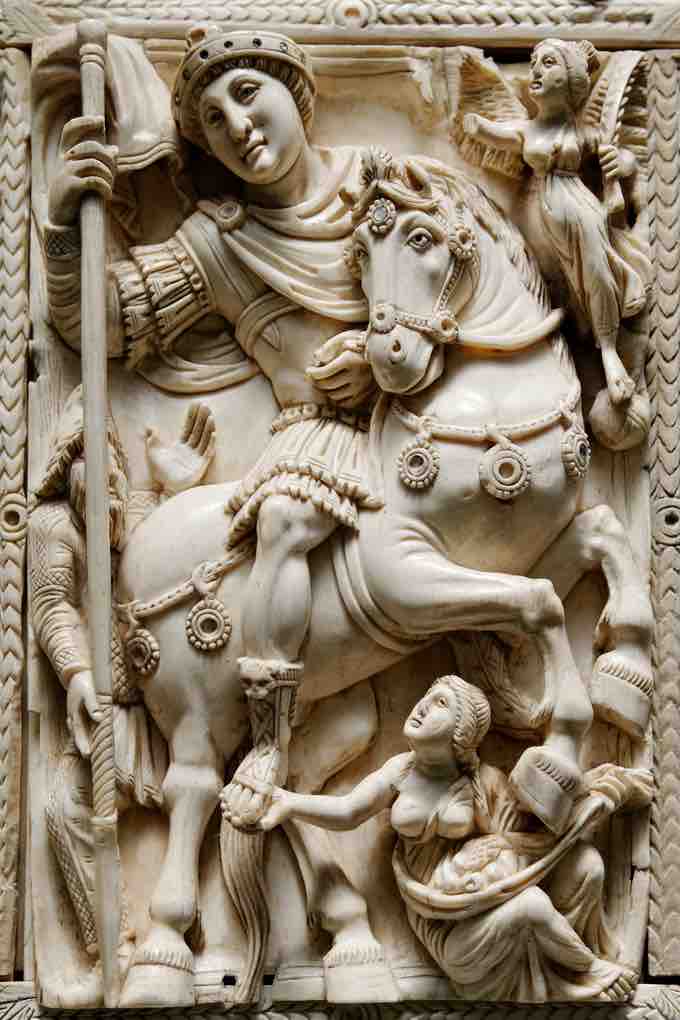Ivory carving is the manual or mechanical carving of either animal tooth or tusk, wherein very fine detail can be achieved, and the surviving works often demonstrate intricate and complicated designs. Ivory carving has a special importance to medieval art history of Europe and Byzantium because it has no bullion value and is not easily recycled like precious metals or jewels. Humans have ornamentally carved ivory since prehistoric times, though until the nineteenth century, it was usually a rare and expensive material used for luxury products.
In the early Christian period, Christians avoided monumental sculpture, which was associated with the old pagan Roman religion, and sculpted almost exclusively in relief. During the persecution of Christians, such reliefs were typically kept small in scale; those on sarcophagi being the largest. The result was that when Christianity became first patronized by the emperors (and later, the official religion of the Empire), these attitudes remained. As a result, small-scale sculpture—for which ivory was in many ways the best material—was central to art in a way that it rarely was at other times.
Consuls, civil officers who played an important administrative role until 541, gave Roman Consular diptychs as presents. These Roman Consular diptychs consisted of two panels carved on the outsides joined by hinges with the image of the consul . The form was later adopted for Christian use, with images of Christ, the Theotokos and saints. Such ivory panels were used as book-covers from the sixth century, usually as the centerpiece and surrounded by metalwork and gems. These book covers were sometimes assembled from up to five smaller panels due to the limited width of the tusk. Carved ivory covers were used for treasure bindings on the most precious illuminated manuscripts.

The Barberini Diptych
The Barberini Diptych depicts a victorious early sixth century Byzantine emperor. Carved ivory relief.